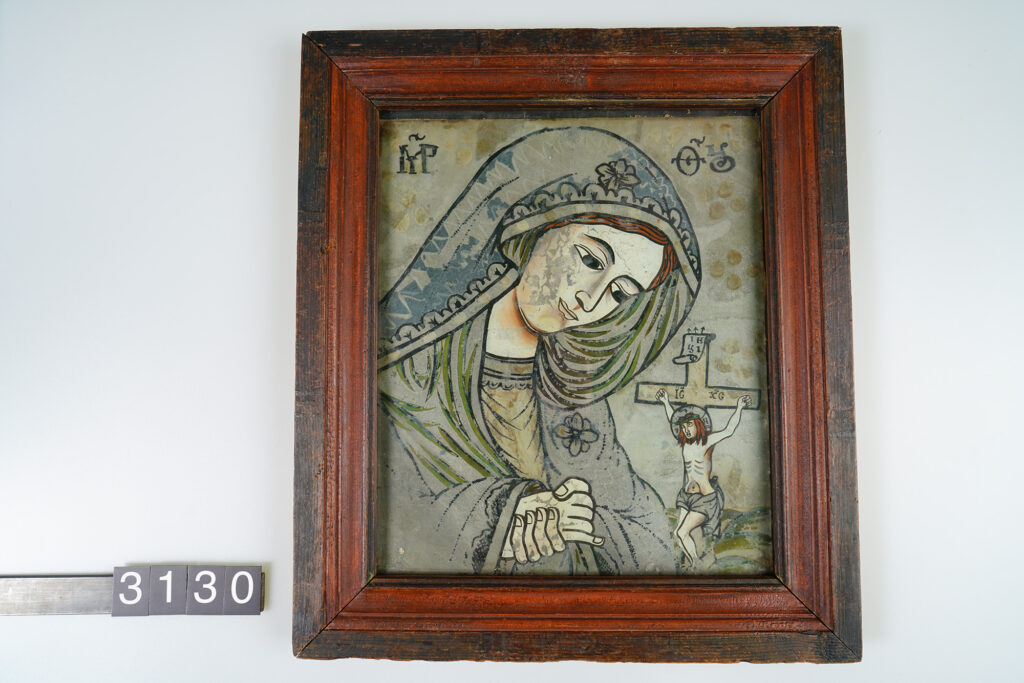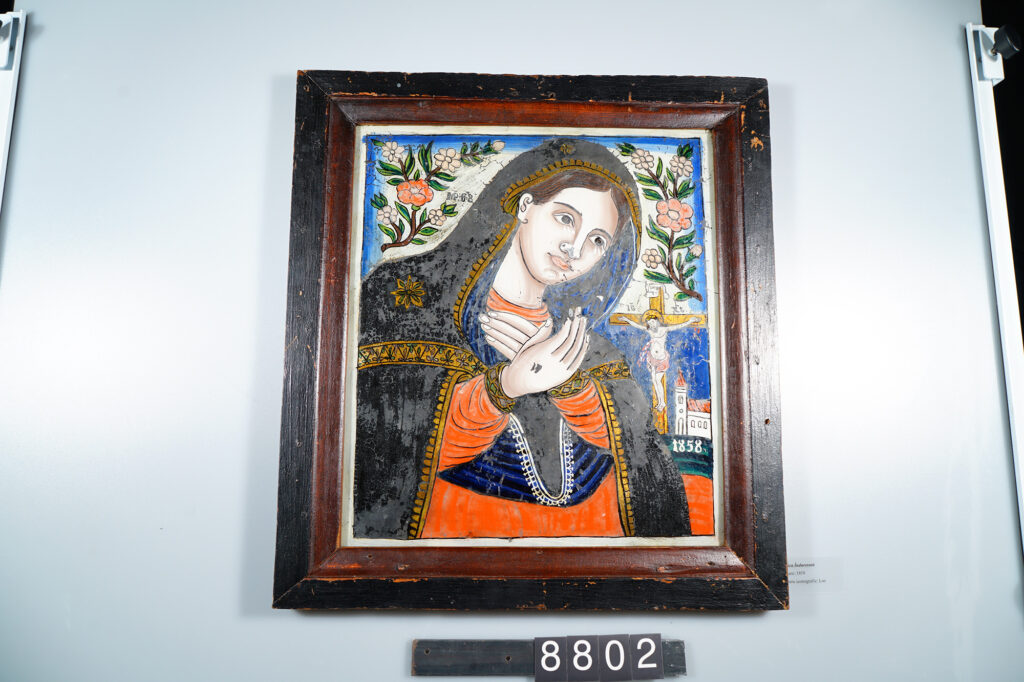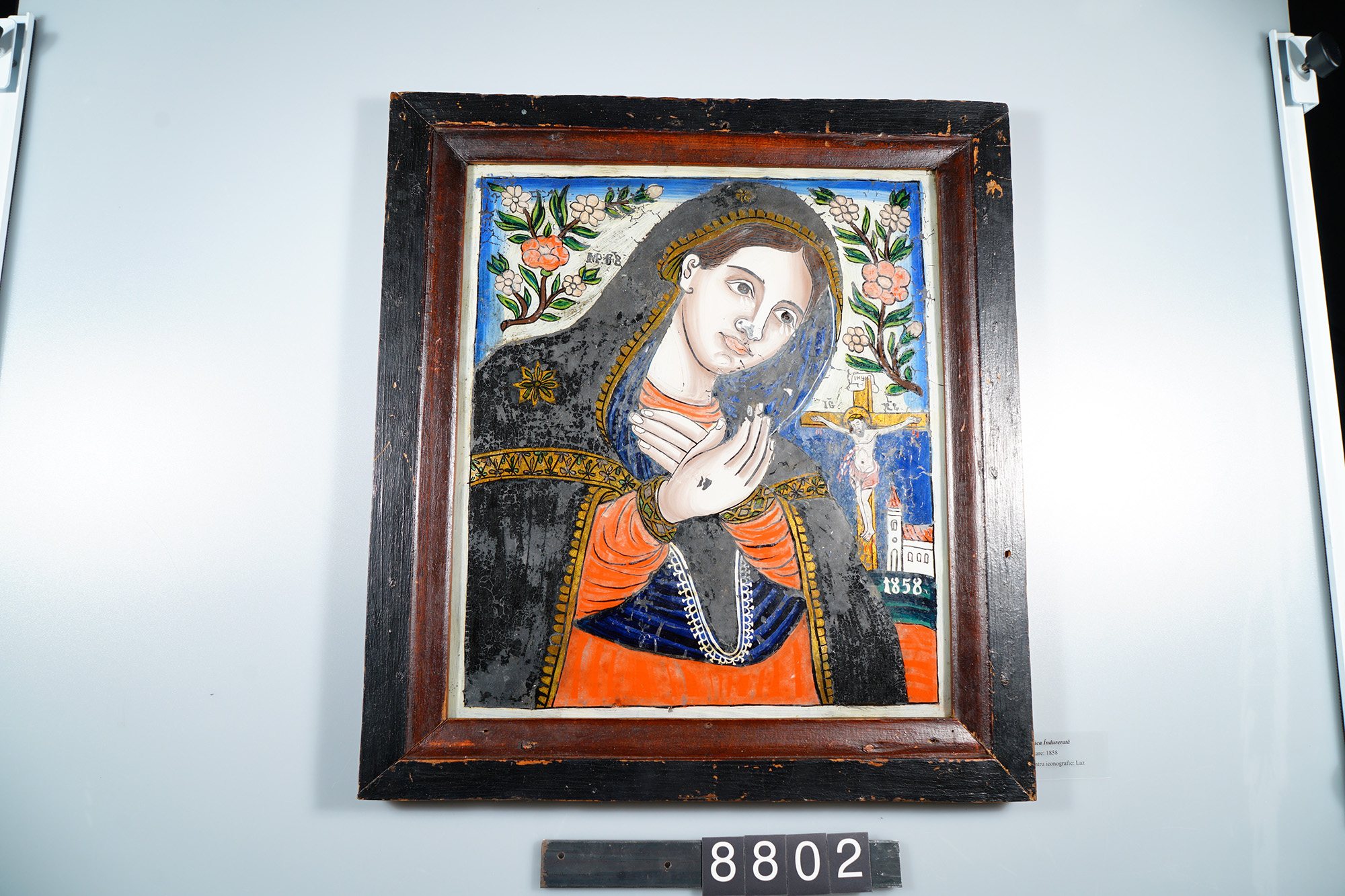Good Friday is a day of great mourning for all of Christendom, because on this day Jesus Christ was crucified and died on the cross for the salvation of all mankind. The day is also called Easter Friday, Dry Friday or Passion Friday.
On this day, we remember the passions of the Savior, which is why this day is also known as Good Friday. Good Friday is also called Dry Friday, because the elderly women from the village fasted, and in the evening, at Denia Prohodului Domnului (religious funeral service of the Lord Jesus Christ) they took anaphora from the church.
On this occasion, we present two icons representing the Lady of Sorrows, artefacts that are part of the innovative exhibition of the project. Icon with inventory no. 3130 is dated to the second half of the nineteenth century, belongs to the centre of Laz iconographers. As a material and technique, the outline is drawn with ink on the back of the glass (thin, irregular, hand-made glass) with the brush, after a stroke. Surface painting is with tempera, in tempera. In some places, silver paper is glued, used as a background. The resinous resin frame is profiled and painted. In size, the icon is 48.6 cm x 42.7 cm. The second icon, with inventory no.8802, presented today is from 1858, it belongs to the Laz centre, with Pavel Zamfir as its author. As a material and technique, the outline is drawn with ink on the back of the glass (thin, irregular, hand-made glass) with the brush, following a model. Surface painting is done with tempera. The resinous frame is profiled and stained. In size, the icon is 55 cm x 45 cm.
The exhibition is organized within the project Innovative techniques in cultural heritage valorisation. Icons from the Sebeș Valley from the collection of the Transylvanian Museum of Ethnography, a project implemented by the Transylvanian Museum of Ethnography as a promoter, in partnership with the Technical University of Cluj-Napoca and the Norwegian association NUDA AS, funded by the EEA Grants 2014-2021, within the RO -CULTURE Programme.
The icon can be admired within the mentioned exhibition, at the museum’s headquarters, Reduta Palace, Memorandum Street no. 21, Cluj-Napoca.


